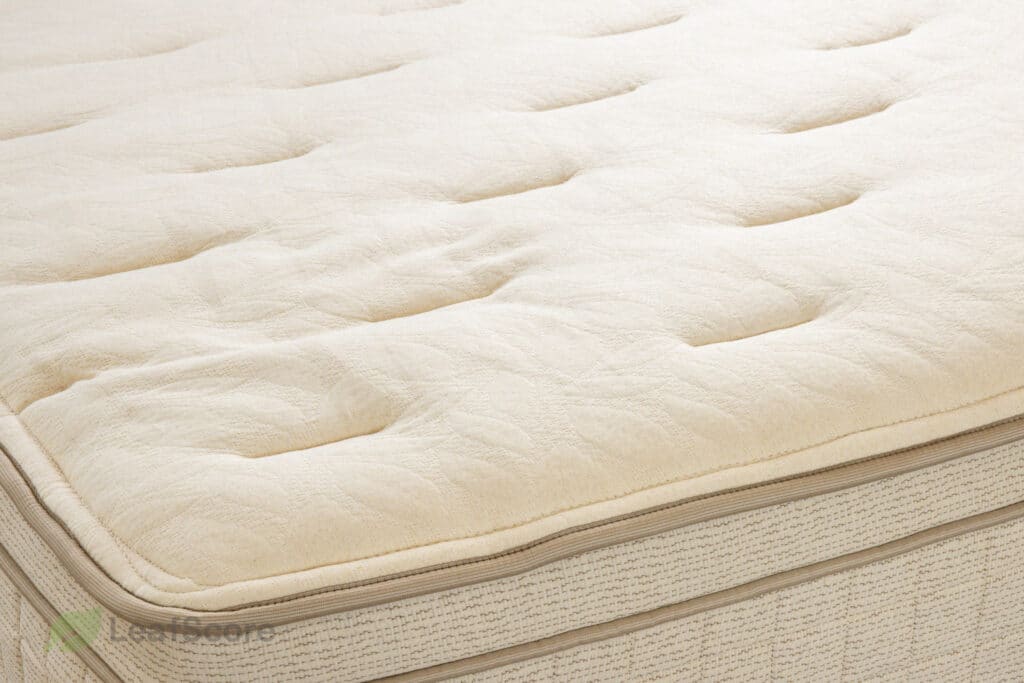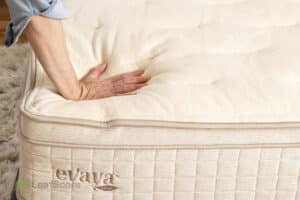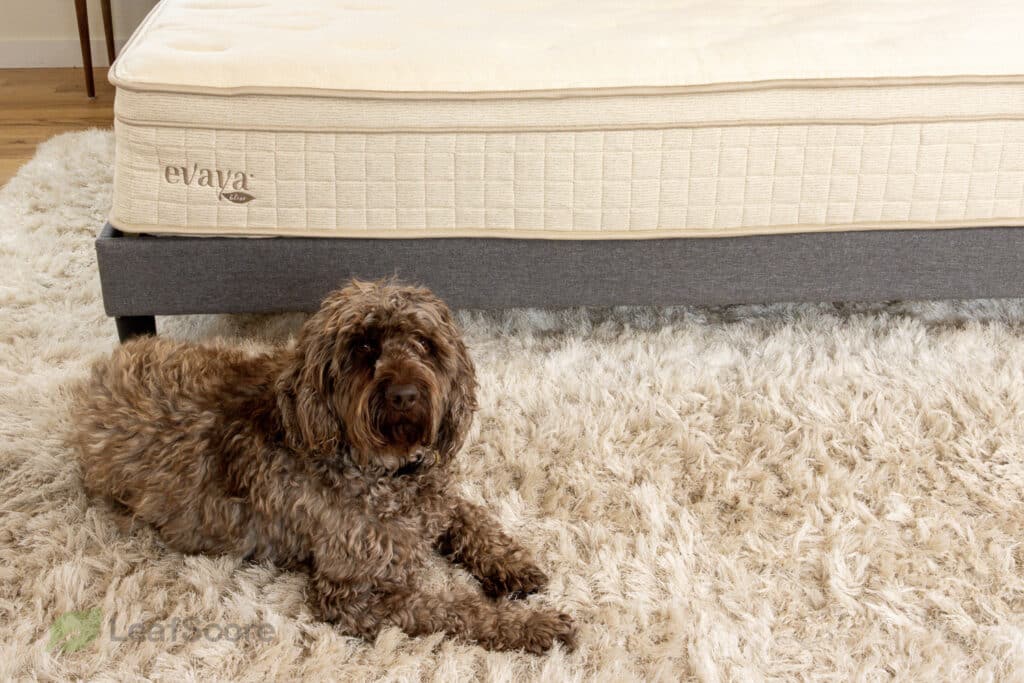Here is why you needn’t worry about metal springs in mattresses and increased cancer risk.

Table of Contents
In the Leaf Score Guide to Mattresses, I look at harmful mattress materials and treatments. Attentive readers may notice that I don’t warn against mattresses made with metal coils or innersprings. If you’re wondering if you sould worry about metal springs in mattresses, or if you just want some good clean fun with physics, read on.
What’s the deal with metal coils in mattresses?
Metal coils have had a bad rap in recent years, seemingly thanks to an unsupported, unscientific, guest article published online in Scientific American. The writer of the article misinterpreted the results and conclusions of a single poor-quality study and claimed a connection between the metal coils in mattresses and an increased risk of cancer on one side of the body.
Put simply, the writer confused the terms ‘attenuated’ and ‘amplified’, which have opposite meanings. Attenuate means to reduce; amplified means to increase. Despite much debunking and explanation, this confusion has since been, well, amplified, elsewhere on the internet.
The unfortunate repercussions of this misinterpretation have caused undue stress and anxiety for many people searching for a safe mattress. It’s also unfortunate in that hybrid coil and latex mattresses are often the best budget buys and are lighter and easier to handle than all-latex mattresses. And innerspring mattresses are often a good choice for anyone with a latex allergy, not to mention being far healthier and more eco-friendly than a foam mattress.

Evaya Organic Mattress [Staff Tested]
Eco-Institut and Made Safe Certified, will never off-gas, and certified to be free of even trace amounts of hazardous chemicals. Manufactured using EverEden Premium wool sourced from New Zealand farmers. The innerspring coils are individually wrapped for enhanced support and comfort.
Use code ESSENTIALEVAYA for 15% off the Evaya Bliss in the LeafScore store.
What did the Scientific America guest article actually say?
In short, the writer of the original article, claimed that the coils in mattresses act as an antenna to boost electromagnetic radiation which, in turn, increases your risk of cancer.
There are several things wrong with this theory. First, for an antenna to boost an electromagnetic field to any significant degree, it needs to have current traveling through it. This is not the case with metal coils inside a mattress. And, even if the coils in a mattress could function as an antenna, most coil units in modern mattresses comprise individually wrapped coils. This means that the coils don’t touch each other and can’t form a single continuous metal coil network.
Second, while we don’t deny that EMFs above certain levels can affect biological systems, typical environmental exposure hasn’t been linked to any detrimental health effects. How do we know this? Because, more than two decades ago, in 1996, the World Health Organization established The International EMF Project to look into whether long-term low-level EMF exposure can ‘evoke biological responses and influence people’s well being’.
Metal coils and EMF
In the past 30 years, around 25,000 articles have been published looking at the biological effects and medical applications of non-ionizing radiation. This is the kind of EMF that doesn’t carry enough energy to break bonds between molecules). Overall, we know far more about EMF than about most chemicals in everyday products, including mattresses.

Indeed, national and international guidelines restrict exposure to higher level EMFs that could, potentially, cause health effects. This is evidence-based, science-based policy created after careful study and examination of substantial amounts of data.
Sure, we can always do more research into EMF, and there are some gaps in knowledge. There is, however, no evidence of adverse health effects from exposure to low level electromagnetic fields.
Why do some people experience symptoms related to EMF exposure, then? Most often, symptoms folks attribute to EMF exposure are actually a result of noise, VOCs, or other environmental factors. Sadly, such symptoms may also result from anxiety and fear over coils. And, unscrupulous as it is, this fear is stoked by some people looking to sell EMF shields and other products of dubious merit.
Final thoughts on the metal springs in mattresses issue

Evaya Organic Mattress [Staff Tested]
Eco-Institut and Made Safe Certified, will never off-gas, and certified to be free of even trace amounts of hazardous chemicals. Manufactured using EverEden Premium wool sourced from New Zealand farmers. The innerspring coils are individually wrapped for enhanced support and comfort.
Use code ESSENTIALEVAYA for 15% off the Evaya Bliss in the LeafScore store.
To try to clear things up once and for all, here’s a quick explainer about radiation.
Ionizing radiation includes cosmic rays and x-rays, as well as gamma rays given off by radioactive materials. This kind of radiation is damaging as it can break bonds between molecules, including in the human body. As such, you’re smart to minimize exposure to x-rays and to wear a good space suit should you ever head into orbit. Oh, and use sunscreen too.
In contrast, electromagnetic frequencies from electricity, microwaves, and radios have a long wavelength, low frequency, and are non-ionizing. They are unable to break chemical bonds and pose no risk to health. That is, unless you use these things improperly (such as putting your fingers in a socket or a metal can in the microwave!).
In conclusion, don’t hook the metal coils in your mattress up to a power supply and you’ll be just fine.
In contrast, worrying about this persistent myth, to the extent that you buy a foam mattress to avoid coils, could have real and significant adverse effects on your health and happiness if you buy foam made with flame retardants and other toxins.
Still not convinced? Maybe email Bill Nye the Science Guy. And in the meantime, consider an all-latex mattress or a wool or cotton futon instead.